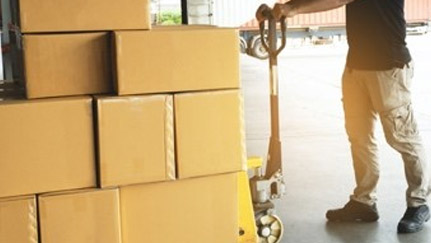Subscribe to our newsletter for timely content in your inbox

Look for these injury risk factors and take steps to make your workplace safer.
Sprains, strains, and pains are common occurrences in many workplaces – and are often caused by lifting. In fact, according to the National Safety Council, overexertion injuries from lifting, carrying, and related activities are the leading cause of work-related injuries involving days away from work.
Sure, there are times when lifting is the only way to move an item from Point A to Point B – but did you know there are some simple rules your organization can follow to make lifting safer for your workers? Keep in mind these five tips and you’ll be on your way to a safer workplace
The next time you see someone lifting, look for these injury risk factors and uncover ways to reduce or eliminate them. Don’t worry if you can’t apply all five rules at once – each area you improve makes the workplace safer and more productive. Need more ideas? Check out these resources to get started.